A few kilometres due north of the historic heart of Berlin you will find the neighbourhood of Niederschönhausen, where many of the streets surrounding the narrow Panke waterway and the salmon-coloured Baroque palace Schloss Schönhausen are named for writers. This drive-through pantheon remembers the likes of Hermann Hesse, Heinrich Mann, Boris Pasternak, Richard Dehmel and Leonhard Frank (a total wurst fest, as you will note). Hans Fallada was actually a resident, and the last street he lived on now bears his (original) name, Rudolf Ditzen.
Head down Ossietzkystrasse past Klaus Simon’s poignant statue of namesake journalist (and Nobel Peace Prize winner) Carl von Ossietzky, take a left after the Panke and you come to the centrepiece of this ensemble – a looped road named for Russian writer Vladimir Mayakovsky. During the Cold War the Majakowskiring was a power base for the inner circle of the East German regime, home to Erich Honecker and other senior leaders, with accommodation for state guests in a white neo-classical villa as well as the Schloss (the purple GDR bathrooms are a particular treat). Slow Travel Berlin can tell you more about Niederschönhausen’s Politburo ghosts.
Majakowskiring was once split into Viktoriastrasse and Kronprinzenstrasse, but under the East German regime’s cultural policy, streets previously bearing the names of royalty and Prussian generals were renamed for writers. But curiously, two writers who not only lived and worked in the late 19th century on what would become Majakowskiring, but also created a revolution in German letters here, are entirely absent from the map: Arno Holz and Johannes Schlaf.
Greater Berlin, showing Niederschönhausen north of the centre
Niederschönhausen, showing the location of Holz and Schlaf’s summer house
In the mid-1880s, Arno Holz was a writer with huge ambitions, one of a dynamic Berlin clique seeking new ways, not just in literature but – with the late arrival of bohemianism to the city – life itself. Holz tasted early critical success in 1885 with his verse collection Buch der Zeit (Book of Time). But even for a bohemian he was low on funds. Along with his material deprivation he was experiencing a grave creative crisis, and longing for a retreat. He was already lodging in Niederschönhausen, then a town outside of Berlin, when a moneyed acquaintance offered the use of his summer house just around the corner on Viktoriastrasse in 1887. He leapt at the chance.
There he started working on an autobiographical novel and pondering how to reshape literature in his own image (Holz was never burdened by modesty). At first the work was heavy going; Holz complained to a friend of his joyless routine – rise at 8:30, walk in the Schloss park, work, walk to Wedding to have lunch with his mother, work, a nap, then more work until midnight. The house was only intended for habitation in the warmer months so winter was particularly hard.
At the time Holz’s friend Johannes Schlaf was facing his own crisis, depressed about the imminent end of his studies, uncertain if his path lay in writing. In 1888 Holz invited Schlaf to live with him in Niederschönhausen and collaborate. Schlaf describes the bells tolling for the death of the first Kaiser just as they set to work. This not only puts a precise date stamp on the beginning of their collaboration – Wilhelm I died on 9 March 1888 – it also has huge symbolic resonance considering the two men were intent on overthrowing the old order and finding new forms to replace the literary orthodoxies of their day.
Former GDR guest house, Majakowskiring, adjacent to the site of Holz and Schlaf’s summer house
Holz was the dominant character, both personally and creatively, Schlaf a ‘willing and malleable ally,’ in the summation of scholar Raleigh Whitinger. Conditions in the summer house were now, if anything, worse; at one point Holz complained of having absolutely no money nor means of securing any, and nothing beyond a slice of bread and dripping for sustenance. Holz and Schlaf’s greatest indulgence seemed to be smoking, and their darkest moments struck whenever the tobacco ran out.
But: there was some alchemy in the combination of these two brooding malcontents that actually produced something akin to joy from these unpromising elements. Here between the palace and the Panke, Holz and Schlaf created a a humble yet convivial hideaway, a writer’s residency in semi-rural seclusion, a bohemian community of two. Their later conflict appeared pre-programmed, but Holz referred to their collaboration and cohabitation as a ‘precious idyll’ and even at the time Schlaf made the poignant, prophetic observation: ‘We know these are the happiest days’.
Arno Holz and Johannes Schlaf
This quiet town on the edge of a heath was a long way from the smoky taverns and chronically overcrowded tenement apartments of central Berlin. But Holz and Schlaf were still regularly drawn – whether for work, for pleasure or for cheap meals – to the centre (it wasn’t walking distance, but walk the distance they would whenever they couldn’t afford the horse-drawn tram). This ambivalent relationship with the city was a typical bohemian trait. Think of the encampment of non-conformists in Montmartre at the time – semi-rural still, but in reach of central Paris. To the east of Berlin, writers and artists were starting to visit Friedrichshagen, and would soon establish a colony there.
Holz abandoned his novel and the two put their bold plans into action. Their first joint work was a closely observed story about a young woman fending off a sexual assault by her uncle, demonstrating not just their fearlessness in the face of taboo but also their alertness to female experience. What little this work owed to the literary conventions of the day was entirely swept away by their next venture. In January 1889 writer Gerhart Hauptmann came to visit them and they read him a new work, Papa Hamlet. This radical and unsettling work marked the explosive launch of Naturalism in Germany and foretold literary developments decades into the future.
Behold! The mighty Panke.
The title novella of Papa Hamlet depicts a bohemian existence clearly informed by the writers’ own experience, but their experiment offered nothing of the claustrophobic mania and constant imminence of disaster which haunt their odious protagonist Niels Thienwiebel and his little family. Before their bitter split they recalled both the hardship and the happiness of their sanctuary:
Our little ‘shack’ hung as airy as a bird’s nest in the middle of a wondrous winter landscape; from our desks, where we sat wrapped up to our noses in large red woollen blankets, we could walk out over a snowy patch of heath which was teeming with crows, study the most wondrously coloured sunsets every evening, but the winds blew on us from all sides through the poorly grouted little windows, and despite the forty fat coal bricks that we put into the stove every morning, our fingers were often so frozen that we were forced to temporarily stop our work for this reason alone. And sometimes we had to quit for completely different reasons. For example, when we returned from Berlin, where we always went for lunch – taking a whole hour, through ice and snow, because it was ‘cheaper’ there – we would crawl back into our little nest, still hungry …
Those red blankets, by the way, reappear in Papa Hamlet. This recollection appeared in an 1892 anthology which brought together their entire collaborative oeuvre, around 300 pages in total – the three parts of Papa Hamlet, the drama The Selicke Family, along with the ‘The Paper Passion’ and three other short stories. This lowered the slab on their experiment; by the time the anthology was published they had fallen out and gone their separate ways. Not only did they never reconcile, through their writing they exchanged barbs for decades, each disputing the other’s contribution to the works that appeared under their names. Holz and Schlaf were each troubled in their own ways, and neither seems to have ever recovered the productive contentment they found in Niederschönhausen.
A time-travelling Holz would find little change in the Schloss and the linden-shaded pathways of its elegant gardens where he would take his pre-coffee constitutional. And on the adjacent Panke – a waterway inconspicuous to the point of invisibility on its route through Berlin’s north – you can see what Holz and Schlaf saw, and understand its appeal. But Majakowskiring is an odd, slightly careworn place today; it clearly has some expensive real estate, yet its roadway has seen better days and its pavements are strangers to weeding. On the site of Holz and Schlaf’s summer house now stands a modern home surrounded by CCTV cameras. There is nothing here to suggest that on this spot, in the late 1880s, two querulous outsiders were already dragging German literature into the 20th century.
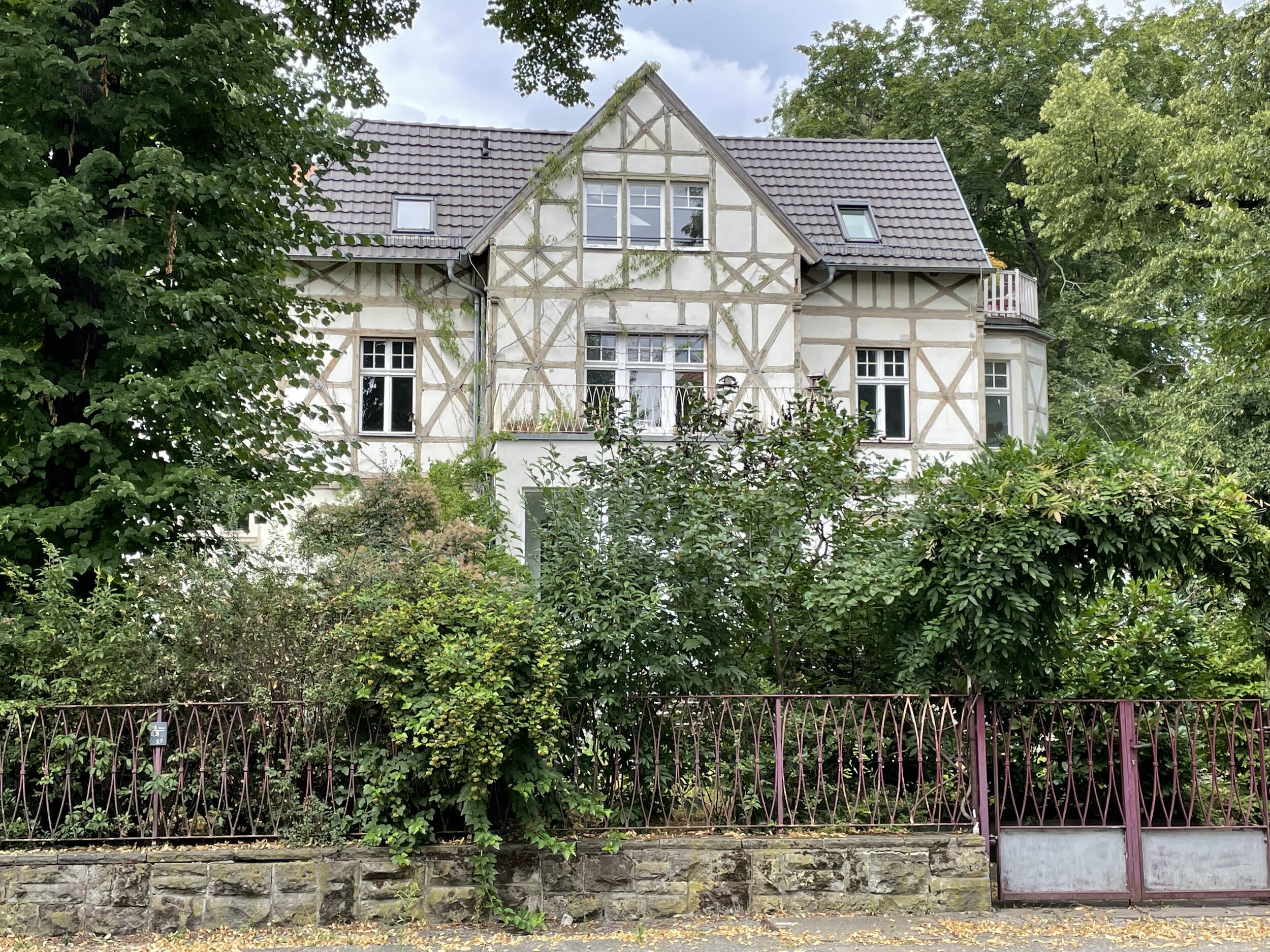
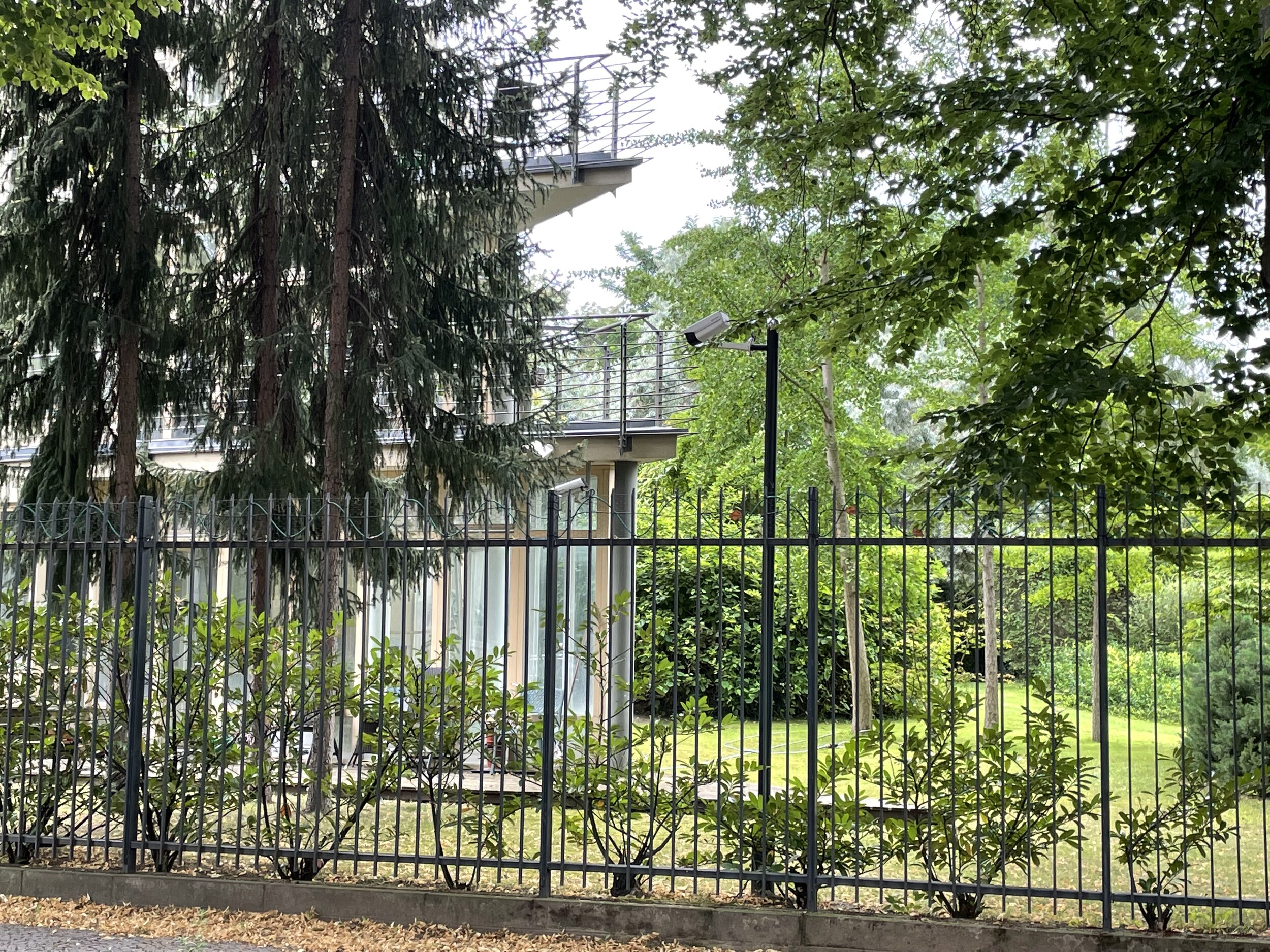
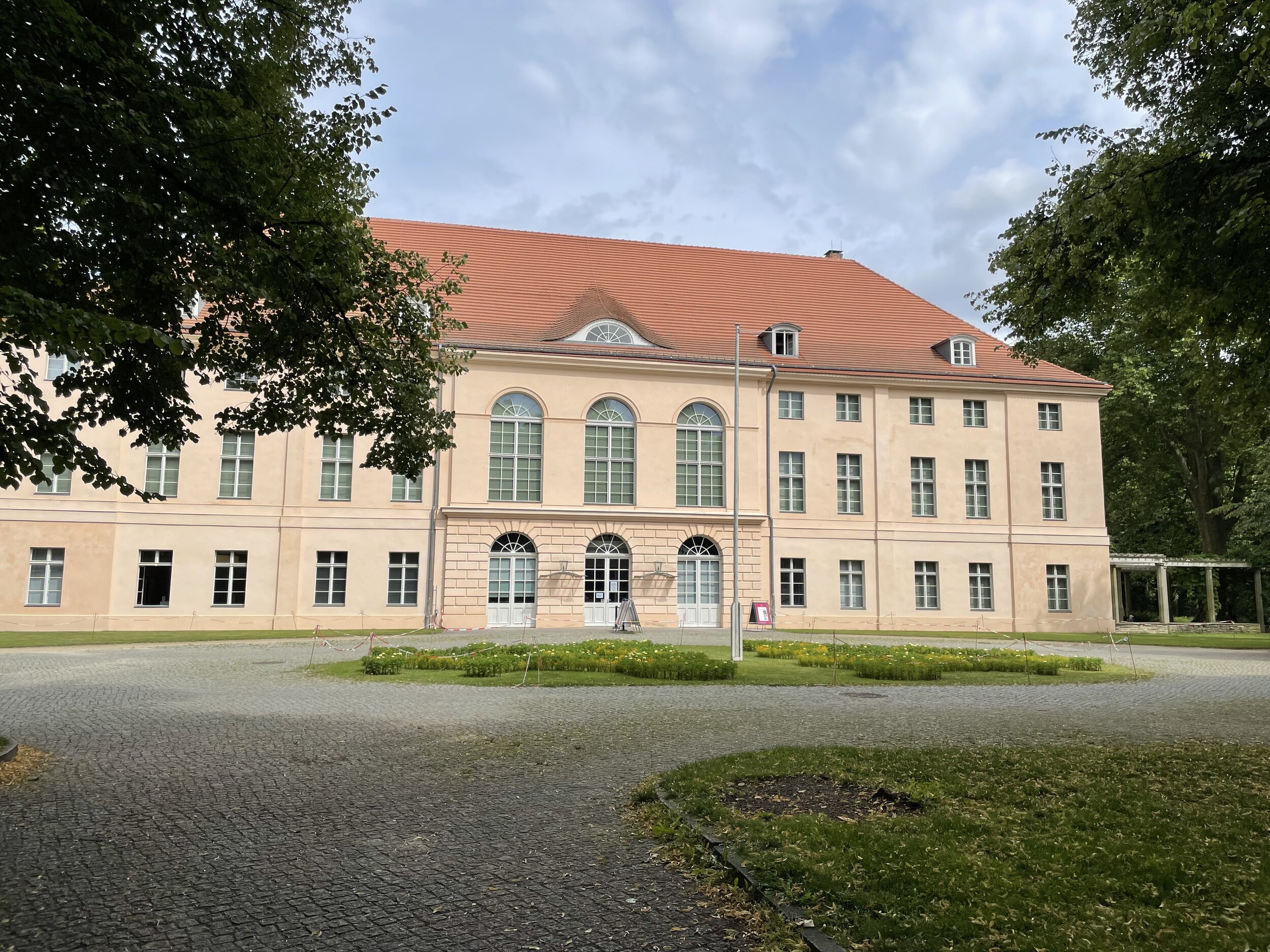
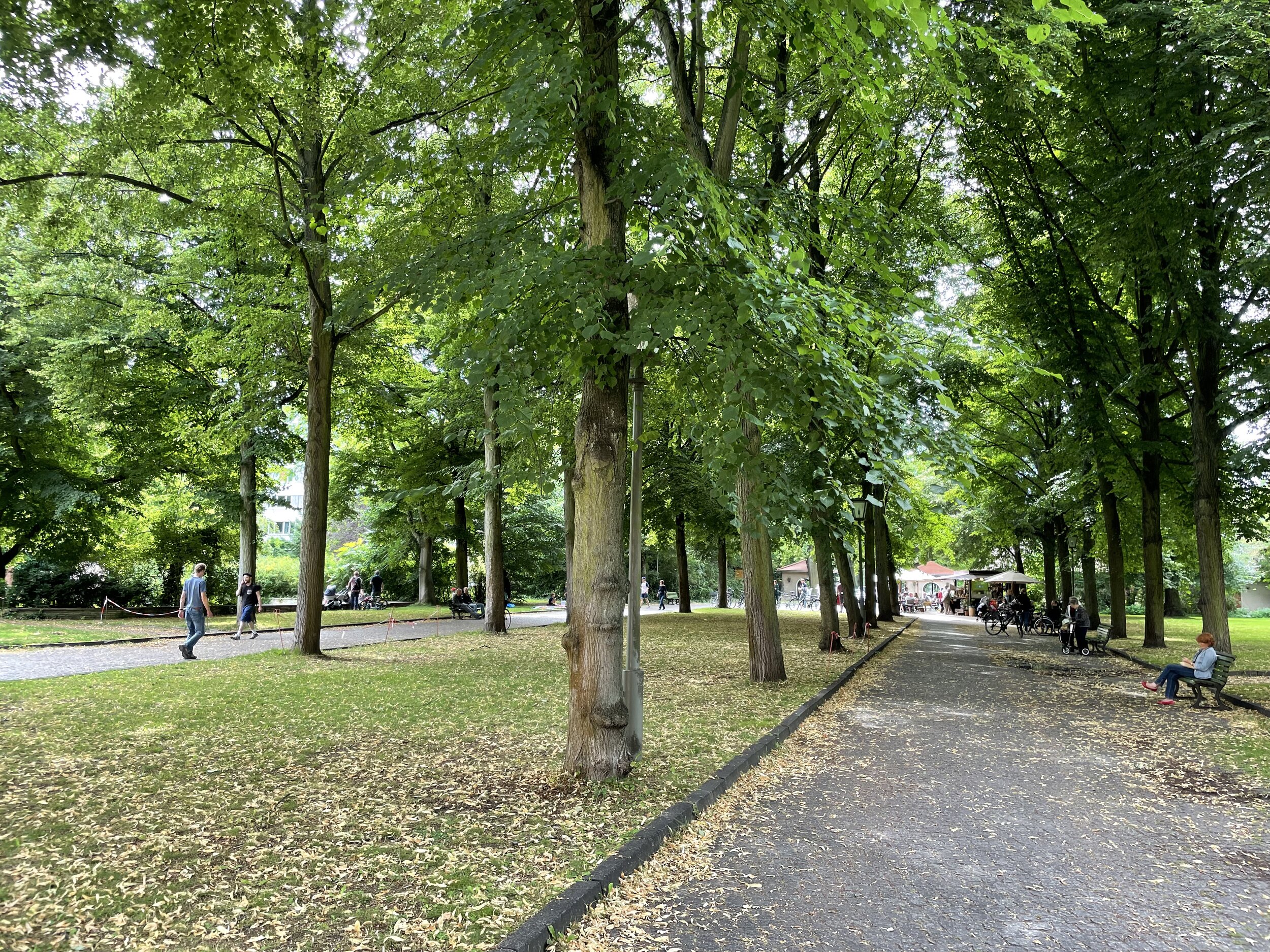

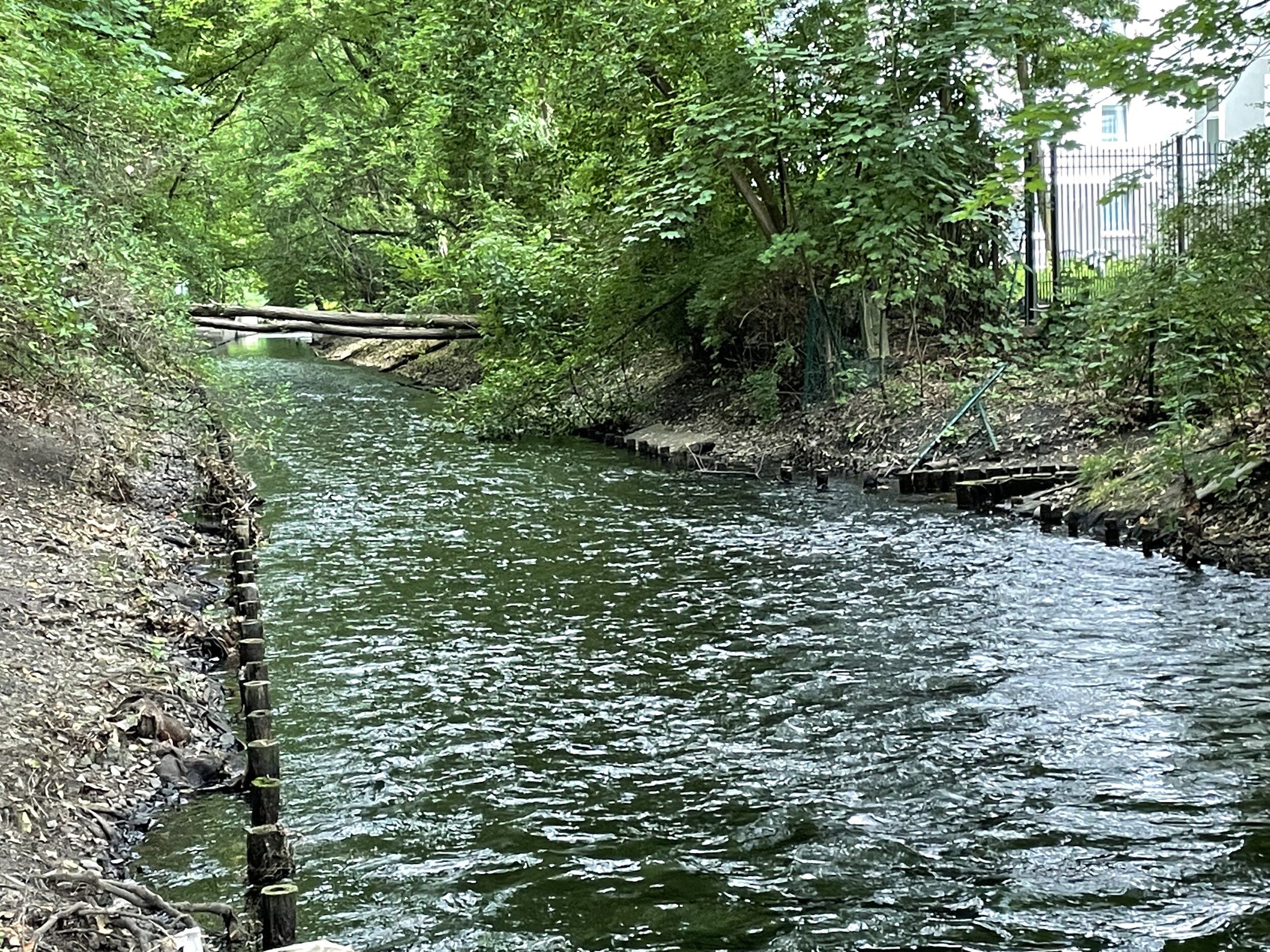
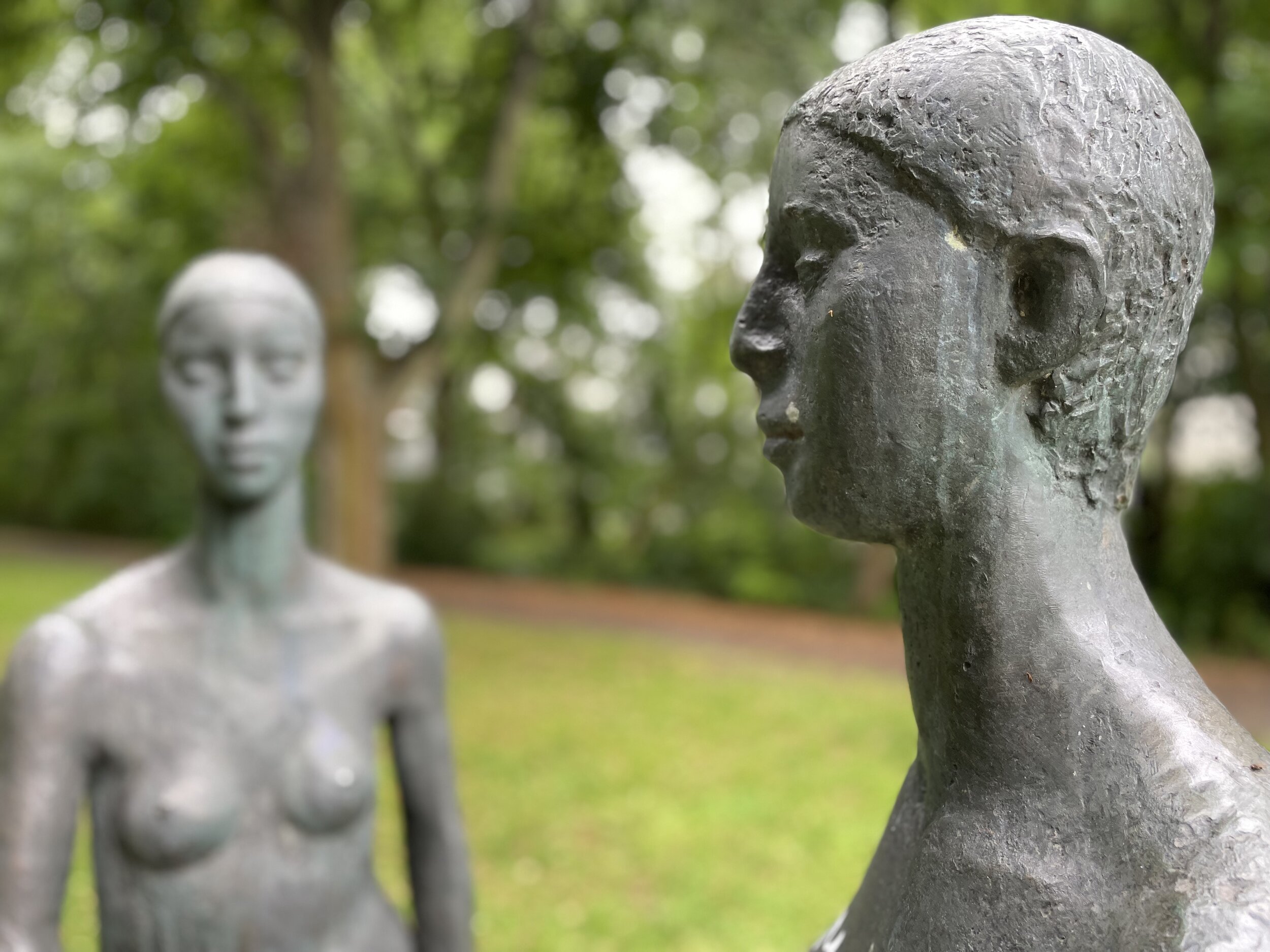
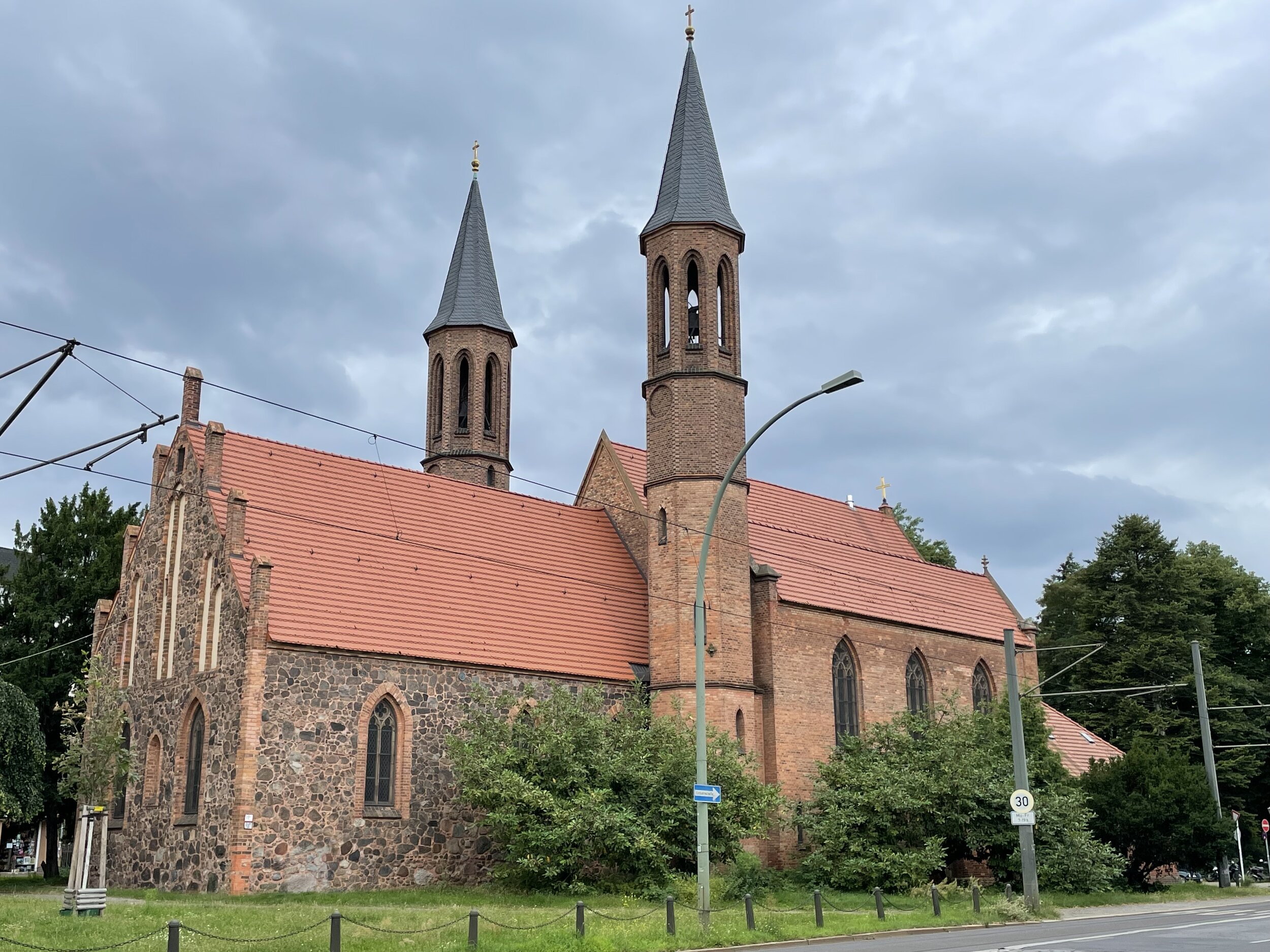

Papa Hamlet by Arno Holz & Johannes Schlaf (translated by James J. Conway) will be published in English for the first time on 18 October 2021. More information here.








